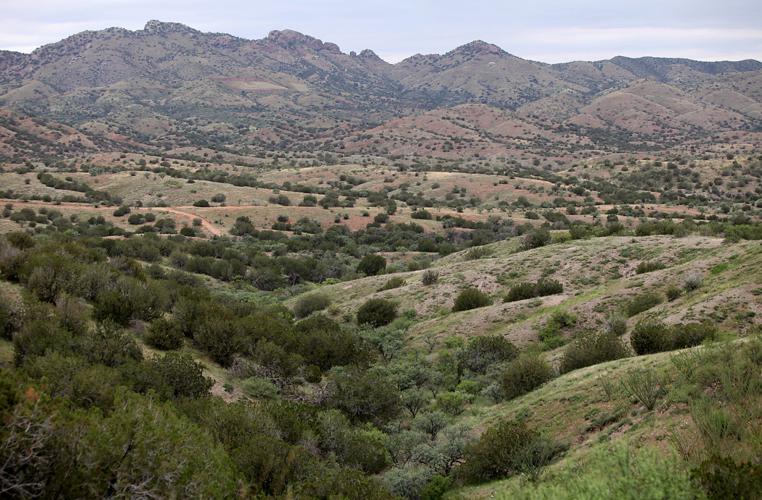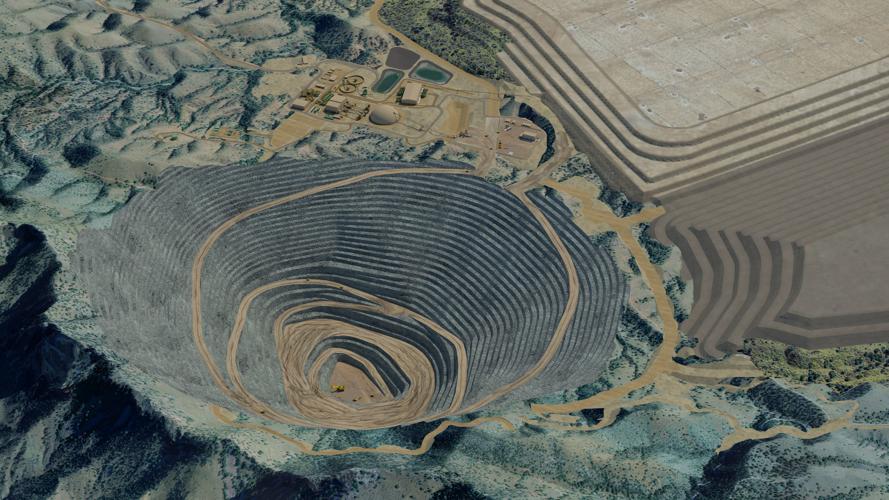A federal judge misread federal laws and regulations last year by overturning approval of the Rosemont Mine, the U.S. government and the mining company proposing the project have told the 9th U.S. Circuit Court of Appeals.
In appealing U.S. District Judge James Soto’s ruling, Hudbay Minerals Inc. and the U.S. Justice Department said federal laws and rules don’t require the Forest Service to determine —as they said the judge required the service to do — that Hudbay had valid mining claims on federal land where it wanted to dump waste rock and mine tailings.
Federal laws and regulations are clear that such activities can be conducted on land lacking valid claims, they said.
“No other court has ever reached such a conclusion, and for good reason, because it runs counter to the plain meaning of the pertinent statutory and regulatory provisions, which broadly permit entry onto open federal lands for the purposes of mining and mining-related activities and expressly contemplate that such activities may ‘take place on or off mining claims,’” Hudbay said in its legal brief in the case.
The U.S. government said Hudbay has the right under the 1872 Mining Law to occupy federal land for its mining operations even if it had no mining claims on it.
Nothing in the 1872 law requires a miner to secure a property right to federal lands before exercising the statutory right to enter, use, and occupy them for mining purposes, the Justice Department said — a view denounced by a law professor and public lands expert in an interview as “a shocking misstatement of the law.”
2019 ruling brought project to a halt
Hudbay also said the mining industry’s future on federal lands is at stake in this case.
Soto’s ruling, if upheld, would prevent mining companies from extracting and processing valuable minerals underneath valid mining claims, “unless all operations are confined entirely to the four corners of the claims,” Hudbay said.
That rule would preclude most, if not all, significant mining operations on federal lands, “despite over 100 years of congressional intent to encourage mining on those lands,” Hudbay said.
The federal government and Hudbay are appealing Soto’s July 31, 2019, ruling, handed down the evening before mine construction was to start in the Santa Rita Mountains southeast of Tucson.
The mine would create 600 long-term, high-paying jobs, but it would also disturb 5,431 acres of Madrean forest and pump 5,000 acre-feet a year of groundwater.
The site of the proposed open-pit copper mine consists of 1,197 acres owned by Hudbay, 574 acres of state land and 3,653 acres of Forest Service land.
Soto hammered at what he saw as the Forest Service’s failure to determine if Hudbay had the legal right to put the waste rock and tailings on 2,447 acres of federal lands. That’s a common industry practice that had been routinely approved for decades on both Forest Service and Bureau of Land Management lands.
Forest Service faulted in original ruling
Soto wrote “the Forest Service abdicated its duty to protect the Coronado National Forest from depredation and preserve the forest from destruction,” by failing to consider whether the mining company held valid claims on land where mine wastes would be dumped.
For a mining claim to be valid, the 1872 Mining Law requires the claimed land to contain a valuable mineral deposit, Soto wrote.
Soto wrote that not only he could find nothing in the records of the 12-year Rosemont case showing valuable mineral deposits underlying those 2,447 acres, that evidence from the mine’s final environmental impact statement shows “the absence of any such deposit within those lands.”
Hudbay said “well-settled administrative practice and guidance” contradict Soto’s conclusion, “for good reason.”
“Whether a claim is supported by a valuable mineral deposit and is thus ‘valid’ has nothing to do with whether mining operations should be permitted on open federal lands,” Hudbay wrote. “Moreover, claim validity is no simple matter, as it turns on complex geological assessments, changing market values for mineral deposits, and changing costs of extraction.”
Also, the actual responsibility for determining mining claim validity rests with the BLM, Hudbay said.
“And tellingly, that agency has expressly declined to require proof of mining-claim validity before approving mining plans of operation on the lands it administers,” Hudbay said.
The U.S. government wrote that Soto misunderstood a key distinction in the 1872 Mining Law between separate rights to occupy and make legal claims upon federal lands for mining.
First, the law gives all miners a statutory right to access, explore and occupy federal lands for mining purposes, the government says. Second, all miners possessing a valid claim have a separate property right enforceable against competing miners and the federal government.
The Forest Service correctly recognized Hudbay’s statutory rights to enter the land, the Justice Department said.
“Because the lands were open, Rosemont had statutory right to use them for its mining operations without securing property rights. Thus, the service had no reason to consider whether the claims were valid,” the department said.
Outside experts debate appeal’s merits
But while a mining company has a right to explore public lands under the 1872 law, it has no right to use those lands for any purpose other than to seek discovery of valuable minerals there, countered Mark Squillace, an associate dean at University of Colorado’s law school.
He said in an interview that the Justice Department’s interpretation of the law, if carried out, would mean that anyone could start mining on federal land even without filing a claim, if such a person or company could get a Forest Service or BLM permit.
Dumping waste rock on land with mining claims is antithetical to the development of minerals and “screams out” for the claims’ validity to be investigated, Squillace said. The Justice Department statements represent a fundamental misunderstanding of how the mining law works, he said.
Industry lawyer Jim Allen disagreed, telling the Arizona Daily Star that Soto’s ruling started from an invalid premise: that a mining claim is essential to give a miner a right of entry onto federal land to put up a waste dump there.
“I think the mining plan of operations was sufficient in and of itself; bringing in additional question of mining claims was unnecessary,” he said. “A mining claim gives two property rights: the right to exclude other miners and the right to buy property from the government and own it outright. If you weren’t interested in either of those, there was no reason in 1872 to stake a mining claim.”
Tribal attorney Stu Gillespie said in an interview that contrary to what the appeal briefs say, Soto didn’t actually require the Forest Service to examine the mining claims’ validity. He simply required the Forest Service to provide a factual basis for assuming Rosemont had a right to use public lands for waste dumping, he said. Gillespie represents the Tohono O’Odham, Pascua Yaqui and the Hopi tribes, which have sued in this case.
John Lacy, a private mining lawyer and director of the University of Arizona’s Global Mining Law Program, told the Star he doesn’t find the appeals particularly convincing, but added Hudbay could still find a legal way to put its wastes on federal land by filing separate millsite claims on it. Hudbay has already filed 755 millsite claims with the federal government, as a possible backstop if it loses the appeal.
“I think it’s a good argument that the millsites are valid but the mining claims aren’t particularly valid,” Lacy said.





